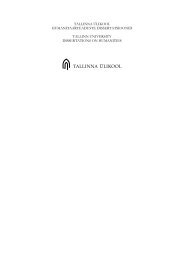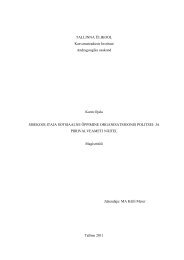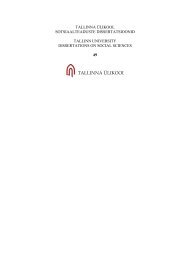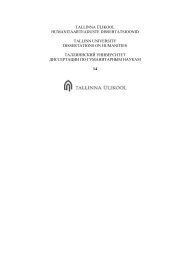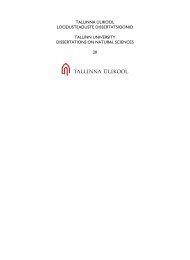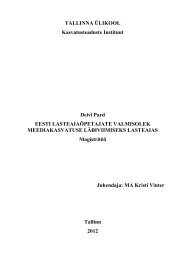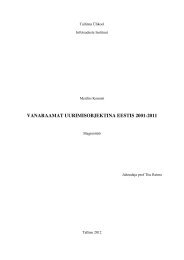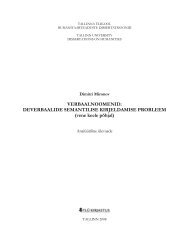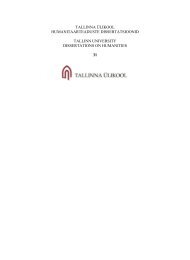Download (1157Kb) - E-Ait
Download (1157Kb) - E-Ait
Download (1157Kb) - E-Ait
Create successful ePaper yourself
Turn your PDF publications into a flip-book with our unique Google optimized e-Paper software.
4.3.2.2. Organisation structure<br />
The success of knowledge sharing in Tanzania public university libraries will be very much<br />
influenced by the structures which support sharing. The investigation carried out of the<br />
websites of all the libraries but one which are covered under this research reveals that they<br />
are configured in hierachirchal structures. Even though the researcher could not find any data<br />
about the last library in the website, it took four visits to this library to have the<br />
questionnaires answered as library staff waited for the consent from the director. This allows<br />
us to predict that, this library configuration is also hierachirchal. Communication is the most<br />
important factor to facilitate knowledge sharing. Studies show that hierachirchal structures<br />
hinder the smooth floor of information between staff and between staff and their supervisors<br />
see for example (O'Dell & Grayson, 1998; Creed and Miles 1996).<br />
Knowledge sharing is well promoted by more flexible structures than hierarchical structure.<br />
In general, organic structures stand a better chance to enhance knowledge sharing than<br />
hierachirchal ones. In those cultures which maintain hierarchies, knowledge holders may be<br />
discouraged by the long communication channel they have to go through to deliver the<br />
information they wish to. Tanzania public university libraries need more participative<br />
structures if they are to enhance knowledge sharing. This is supported by the research done<br />
by Ahmed, Lim and Loh see more in organisational structure section 2.4.2.2.<br />
Suggesting changing of the whole structure is likely to cause more problems than it can solve.<br />
Alternatively, libraries should opt to modify existing structures to allow more flexibility and<br />
participation. (Nonaka & Takeuchi, 1995) indicate that a combination of a formal<br />
organizational structure and a non-hierarchical, self-organizing organizational structure<br />
would improve knowledge creation and sharing capabilities. The combination of the two<br />
structures will promote innovation through cultivating a more cooperative climate. More<br />
social interaction which is indeed essential for exploring tacit knowledge is likely to happen<br />
when the organisation structures are less formalised and decentralised.<br />
Cooperation should go beyond the limit imposed by departmental divisions. When the<br />
researcher visited different websites for the libraries in question to see how the divisions are<br />
made, it was found that three departments were most common in almost all libraries. These<br />
were identified as reader‟s services, technical services and information services even though<br />
there were slight differences in the labels. This suggest that, if there is no way to bridge these<br />
58



